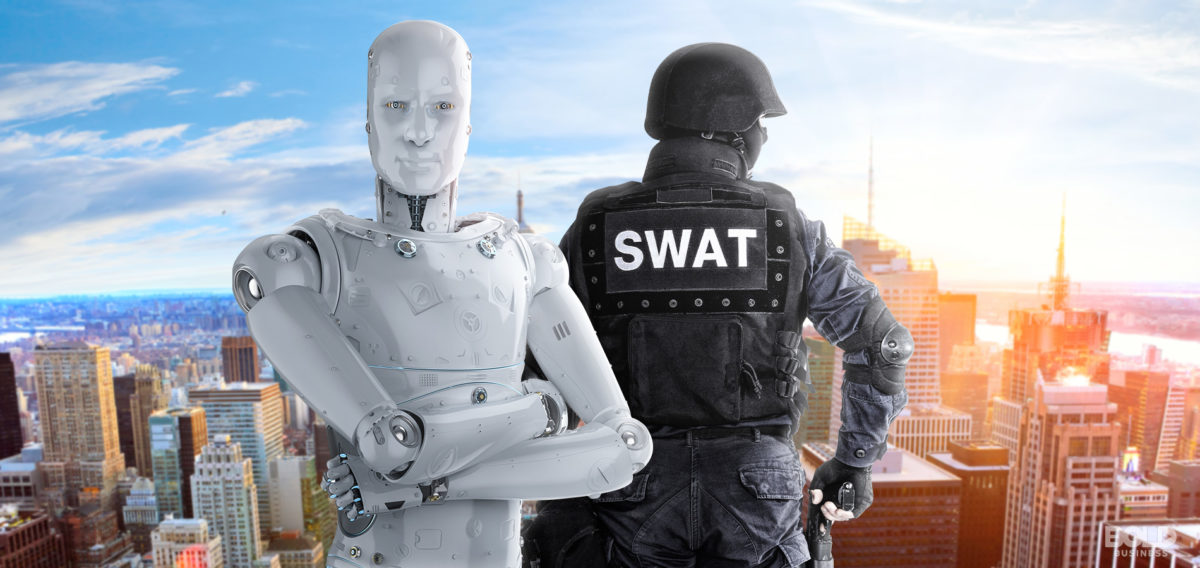Law Enforcement is a profession with many challenges. For instance, the rapid Identification of individuals, the predicting of criminal actions and the fighting against fake news. To cope with these challenges, police officers require analytical skills to scan their environment and remember all of this to collect as much evidence as possible. As artificial Intelligence (AI) possesses unprecedented capabilities to acquire and analyze data, AI seems perfectly fitted to strengthen law enforcement (LE). (Campbell, 2018)
One of many implications of AI within LE is the use of body cams. As stated before, recognizing faces is an important aspect of the police work. With the use of body cams and AI, facial recognition could happen on the spot. For instance, a Chinese firm equipped police officers with facial recognition glasses which told the officer real time if the person in front of them was on a police blacklist (Campbell, 2018). Also, the body cams protect citizens. Since police officers are recorded on their job, they are forced to stick to the rules and only use their power in a justified way (Campbell, 2018).
Next to these advantages for LE, other benefits could be achieved as well. For instance, Facebook is using body cam footage of LE to train their video take down algorithms (Porter, 2018). This will reduce the social impact of for instance terrorist trying to scare a particular group of individuals.
Although the benefits sound massive, not everyone is excited about these developments. Techniques are developing rapidly, but some models still have accuracies of only 50% (Walch, 2019). For this reason, its use in life-and-dead situations should be secured. Also, the use of facial recognition could impact any individuals privacy, raising an ethical question (Tangermann, 2019). In other words, in case society would use AI as one of the main forces in Law Enforcement, more progress should be made.
Even though the technology of AI isn’t optimized yet, the technology already shows great potential. And since there is just too much data for the officer to capture alone, AI is strongly expected to assist within the upcoming years. Let’s hope the developments turn into great improvements after carefully making considerations about the downsides and advantages of AI for LE
References
Campbell, T. (2018). ‘Opportunities and Challenges from Artificial Intelligence for Law Enforcement’. Assessed on 04-10-2019 via https://www.futuregrasp.com/opportunities-from-artificial-intelligence-for-law-enforcement
Porter, J. (2018) ‘Facebook to use bodycam footage from law enforcement to train its video takedown algorithms’. Assessed on 01-10-2019 via https://www.theverge.com/2019/9/18/20872350/facebook-law-enforcement-bodycam-footage-training-algorithms-christchurch
Tangermann, V. (2019). ‘Police Body Camera Maker Decides Against Using Facial Recognition’. Assessed on 04-10-2019 via https://futurism.com/police-body-camera-facial-recognition
Walch, K. (2019) ‘The Growth Of AI Adoption In Law Enforcement’. Assessed on 03-10-2019 viahttps://www.forbes.com/sites/cognitiveworld/2019/07/26/the-growth-of-ai-adoption-in-law-enforcement/#4a3aaa3d435d


